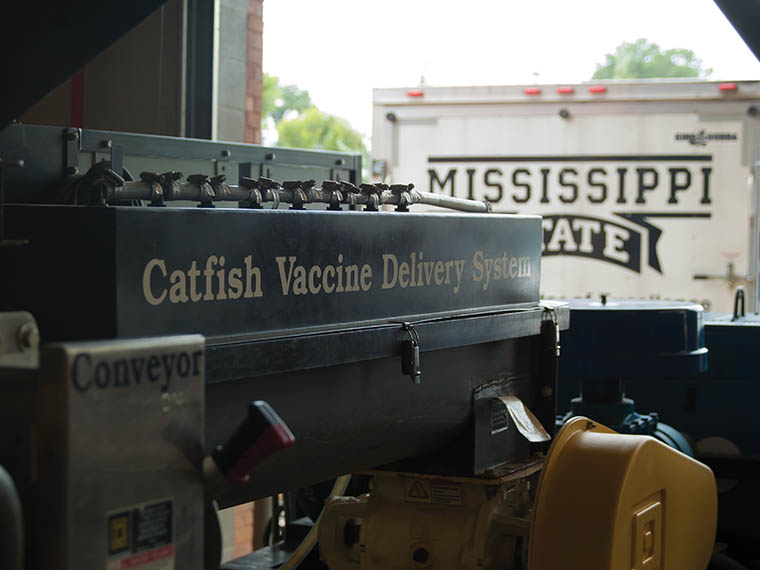The information presented on this page may be dated. It may refer to situations which have changed or people who are no longer affiliated with the university. It is archived as part of Mississippi State University's history.
MSU scientists have developed a vaccine to protect catfish from commonly occurring bacteria that can cause death. Catfish is an economically important aquaculture enterprise for Mississippi with 275 operations covering 43,800 acres. Mississippi is the number one state in the nation for production of catfish. The bacterium, Edwardsiella ictaluri, causes enteric septicemia or ESC. During their growing season, every catfish fingerling raised in the Mississippi Delta is exposed to the bacteria. ESC is estimated to reduce production by 25-30 percent costing the industry $30-40 million annually.
A vaccine and delivery system developed by Mississippi Agricultural and Forestry Experiment Station scientists in the Thad Cochran Warmwater Aquaculture Center has received a patent. The vaccine has the potential to fundamentally improve the economic viability of the catfish industry because of its positive effects on survival, growth, and feed conversion. Vaccination protects the catfish by exposing them to a weakened form of the bacteria that stimulates development of an immune response without causing the disease. When vaccinated fish are later exposed to the fully virulent wild strain, their immune system is able to prevent infection. The vaccination allows growers to continue to feed throughout the fall and achieve greater weight gains and full production.
Researchers estimate about 75 percent of a pond population ingests the feed and subsequent vaccine. The dose is safe and consistent. It only takes one dose to vaccinate the catfish. Survival and size of the catfish both increased as a result of the vaccine.
January 1 - June 30, 2015
- Invention Disclosures (7)
- Patent Applications (4)
- Patents Issued (1)
- Licenses/Options Executed (1)
Patent Applications
- Methods for Improving Rice Nutrition via Manipulation of Starch Crystalline Structure and Nutrient Penetration Treatment
- Utilization of Oleaginous Microorganisms as a Nutritional Supplement for Animals
- Use of Burkholderia contamins MS14 and Occidiofungin as a Fungicide Against Plant Pathogens
- Generation of Imazapic Resistance Switchgrass Population (Expt. Desgn. LL PANVI Alamo IR)

